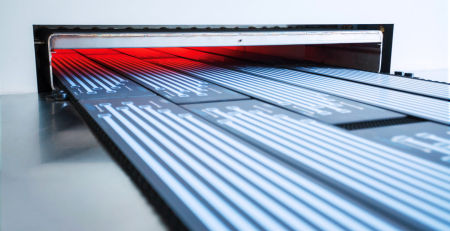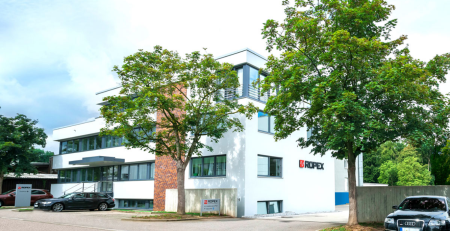Customer requirement:
The manufacturer of baking yeast was faced with a challenging task: minimizing waste when vacuum sealing the granulate in its Vertical Form Fill Seal (VFFS) machine. Until now, continuous heating technology had been used, but this did not lead to the desired results.
The problems with the permanently heated sealing tools were manifold. The hard base of the metal jaws prevented the effective correction of creases or layer jumps, which led to a reduction in seam quality.
When implementing our impulse sealing system, the limited space in the packaging machine proved to be a challenge. It was also essential to create a stable seam, as vacuum sealing exerts high pressure on the seam immediately after sealing.
Our solution:
To reduce waste, we have developed five RESISTRON systems that customers can use to retrofit any welding station in their machine. Each system consists of a temperature controller, sealing tools and associated system components.
A silicone profile was fitted underneath the heating bands to compensate for wrinkles or layer jumps. This measure ensures a consistent sealing pressure and significantly improves the overall quality of the end product.
The tools are heated on both sides so that the heat penetrates the film evenly, resulting in consistent quality and thus minimizing rejects.
RES-5010 Profinet controllers in combination with a mains filter, transformer and current transformer (PEX-W5) were used for the control cabinet. Only minimal intervention was required in the machine’s existing electrical cabling, which increases cost efficiency and minimizes downtime during the conversion process.
Customer advantages:
✓ Reduction in vacuum loss: Vacuum loss has been reduced from 3% to 0.3%. This improvement not only contributes to the efficiency of vacuum sealing, but also to saving resources.
✓ No warm-up phase for the tools: Thanks to impulse technology, there is no need for a warm-up phase. This enables faster commissioning and helps to increase overall efficiency and save energy.
✓ Higher quality seams: The integration of a silicone profile underneath the heat sealing band ensures effective compensation for creases or layer jumps, resulting in higher quality seams. In particular, the pellets in the seam area are evened out, which improves the end product quality.
✓ Uniform vacuum seams: Thanks to the tools heated on both sides, uniform heat input into the film is ensured, resulting in homogeneous seams.
✓ Reduction in production costs: The reduction in waste contributes directly to a reduction in production costs. Minimizing defective products not only saves material, but also working time and resources.
✓ Minimal downtime during the retrofit: The selection of suitable system components enables a smooth retrofit process with minimal downtime. This leads to an efficient changeover to the new RESISTRON systems without significantly disrupting production processes.





